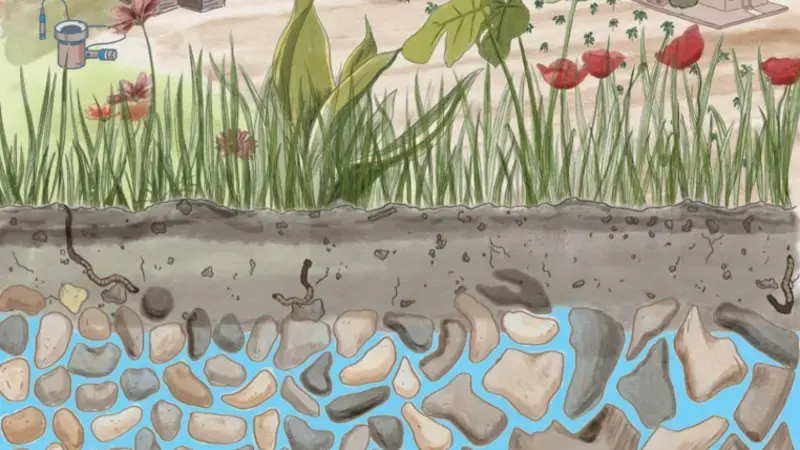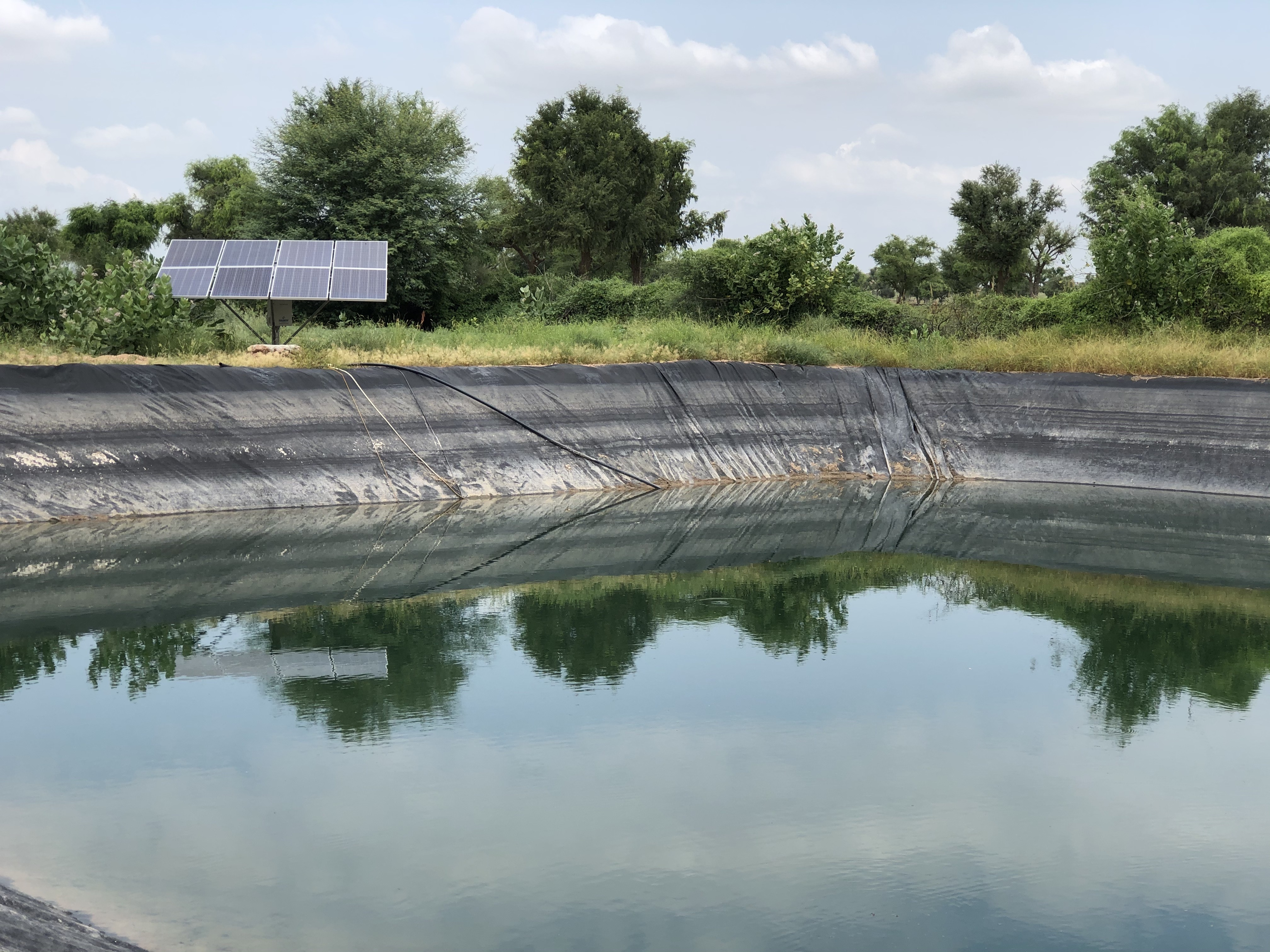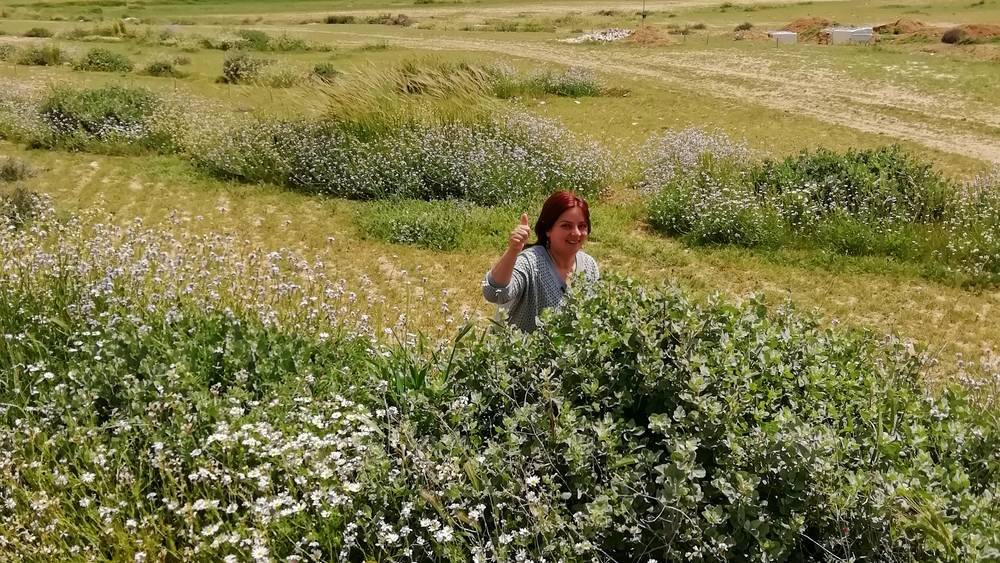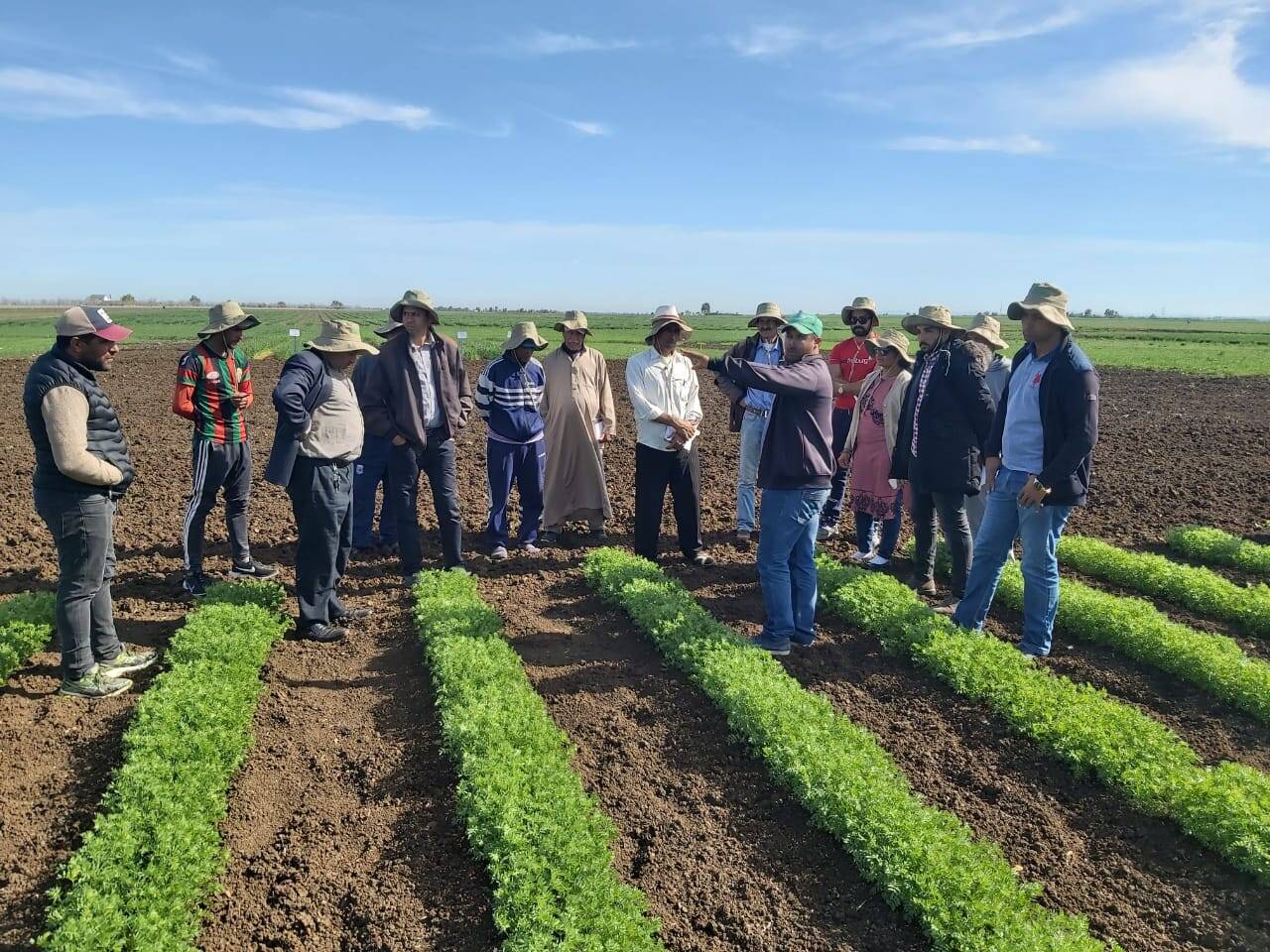Protecting Scarce Dryland Water

ICARDA is grateful to the United States Agency for International Development (USAID), the U.S. Forest Service, and the governments of India, Morocco, and Australia for funding this research. ICARDA would also like to recognize its partners the Central Arid Zone Research Institute (CAZRI), L’Institut National de la Recherche Agronomique (INRA) Maroc, and the National Agricultural Research Center (NARC) Jordan.
By Dr. Vinay Nangia, ICARDA Research Team Leader in Soils, Waters, and Agronomy
Freshwater is a rare commodity on our planet. It only makes up around three percent of all the water that’s available in our vast oceans - and is mostly in a frozen state. What fills rivers, lakes, and streams is only a tiny percentage of total global freshwater. Yet hidden in underground aquifers, after seeping through layers of sand, gravel, and bedrock, is 60 times more water than in our rivers.
Over centuries we have accessed this water through wells and springs, and more recently pumps. But as water needs grow, excessive pumping for irrigation and municipal uses has depleted global groundwater reserves. Water quality has also become increasingly compromised as seepages of industrial, municipal, and agricultural toxic waste and chemicals work their way down and taint previously pure groundwater supplies.
- Dryland groundwater – precious as gold?
Groundwater, and any other source of freshwater, is scarce in the dry areas where ICARDA works. Apart from shallow coastal aquifers located in rainfall-prone areas, or those beneath rivers, most dryland aquifers hold reserves of fossil water that has taken millennia to accumulate underground because of highly irregular precipitation. Water that, by definition, is finite.
Lack of alternative freshwater sources means that dryland communities rely on groundwater to meet their domestic and agricultural water requirements. Today, about half of the world’s livestock and 44 percent of global food is produced in the drylands, where 2.5 billion people live. Groundwater will inevitably run out. And what then?
Relying on aquifers to satisfy potable water needs is less of an issue than dependence on non-renewable fossil water for agriculture - since irrigation guzzles 75 to 90 percent of all available freshwater in the drylands. As such, it is taking a toll on many countries’ already tight water budgets.
Largely driven by growing populations and domestic food needs, this intensive water use means that countries such as Egypt, Iraq, Tunisia, or Morocco must import almost 45 to 55 percent of their food needs, while Jordan and Saudi Arabia rely almost entirely on food imports.
Climate change-related impacts such as soaring temperatures and rainfall variability, along with factors related to population growth, the continuing expansion of irrigated agriculture, and rampant urbanization, mean that the pressure on aquifers has never been greater.
- Making water last
ICARDA has developed evidence-based packages of agronomic innovations and farming practices that boost dryland farmers’ livelihoods and try to prevent unsustainable water use and agricultural expansion.
One such innovation consists in enhancing indigenous rainwater harvesting techniques by coupling them with solar irrigation and GPS-guided Vallerani ploughing – to create efficient rainfall micro-catchment structures that conserve water.

In the state of Rajasthan in Western India, ICARDA fine-tuned the long-established rainwater harvesting system Khadin, in which low earth walls are erected around a field to force the rainwater to seep into the soil, which allows marginal crops to grow in the residual moisture.
With support from the Indian government, and in partnership with the Central Arid Zone Research Institute, ICARDA incorporated a lined rainwater harvesting structure to the traditional Khadin and applied water using solar-powered irrigation systems to enable farmers to grow highly profitable crops such as fruits and vegetables and maximize the crop-per-drop production of the overall system.

In the Badia desert in Jordan, which receives very little rain (under 150 mm annually), ICARDA partnered up with Jordan’s National Agricultural Research Center and the WADI NGO to develop a series of sustainable land management practices and rehabilitate the area’s severely degraded rangelands.
In order to restore the soil’s ability to conserve water upstream and retain sufficient moisture to grow indigenous plants and shrubs, ICARDA used a Vallerani tractor to plow water-harvesting pits around the intervention area.
Downstream, a macro-catchment water system called ‘Marab’ was constructed using simple earthen embankments and soil leveling to boost water infiltration. There, ICARDA, its partners, and local agropastoralists have managed to successfully cultivate high-yielding barley, while slowing down desertification and improving the livelihoods of local Bedouin communities.
- More crop per drop
To limit water use, improve crop/water productivity and soil health, and increase dryland farmers’ income, ICARDA scientists also work with local partners to run extensive diversified cropping field trials to identify associations of cereal, legume, and forage crops that use less water while improving soil and nutrition.
Since legumes are easy to cultivate, require minimal water inputs, and are nutritious, they prove a significant cornerstone of any diversified cropping system which also includes cereals and forage crops.
It is in large parts thanks to ICARDA’s work in partnership with INRA (Institut National de la Recherche Agronomique) in Morocco that the Moroccan Ministry of Agriculture, Marine Fisheries, Rural Development, and Water and Forests announced in November 2021 that up to one million hectares of cereals will be cultivated under Conservation Agriculture by 2030.

Other research includes investigating the potential of irrigating forage crops for animal feed and biofuels with wastewater and greywater resources in water-stressed regions of Egypt and Jordan and addressing soil salinity through salt-tolerant crops (rather than ‘washing’ salt from fields with large volumes of precious freshwater).
The future of agriculture and domestic food security in drylands depends on a number of factors, with the clean and available freshwater sources being critical. The current rate at which groundwater reserves are extracted for irrigation and municipal purposes is not sustainable, and drylands’ minimal and variable rainfall pattern prevents most aquifers from recharging fast enough.
ICARDA and partners believe the solution lies in evidence-based innovation that allows ‘more crop per drop’, along with other affordable sustainable water use approaches, tailored to specific regions and demands. The worry is that time, like dryland water, is trickling away.
